Choosing a Backpack
Which Pack?
After footwear, the backpack is one of the most crucial pieces of equipment that most outdoor enthusiasts will own. I mean you can’t even discuss hiking without talking about a backpack. With one or two rare exceptions, every time I am out hiking, I will be carrying a pack of some sort.
Now I need to own up here and state for the record that I’m a ‘gear freak’ and I currently own 10 packs. I will use 4 of these regularly with the others getting wheeled out for particular hikes; which one I use will depend on the type of hike. The remaining packs I haven’t gotten around to selling just yet but have found that on occasions when I have taken friends hiking who don’t own their own gear, they act as loaner packs so end up being quite useful and I’ll probably hang on to them ‘just in case’.
Choosing a backpack shouldn’t be something you do on the spur of the moment or just because it’s on sale. Ideally you need to do your research to work out what it is you really need and want (which can conflict with each other), and then go out and try different packs on. My oldest pack is currently 11 years old and while it doesn’t get used much any more, it is still in good condition and still very usable.
I also tend to buy packs that are readily available from retail stores rather than cottage manufacturers. Its not that I have anything against cottage manufacturers its just a personal choice and it means that in most cases I can buy a pack on the spot or if ordering online, have it within a matter of days which was a big consideration when I make a purchase.
The following are five (5) considerations you need to think about when choosing a pack:
- Purpose
- Pack size/volume
- Features (including fit and comfort)
- Cost
- Durability versus weight
Read our article on fitting packs here or listen to the podcast on choosing and fitting backpacks here
1. Purpose
What are you going to be using your pack for? This is an obvious question that many people tend to overlook and this question often forces you into owning more than one pack. Are you going to be doing a simple day trip on a well formed trail within mobile phone range or are you doing a multi week/month trips that requires you to carry your home on your back for an extended period and be fully self reliant?
While you can choose to compromise and just go for one pack you will find that this is a compromise you may not want to make.
2. Pack Size
And this is where the arguments start between hikers. Ideally when you choose a new pack you should do so based around your own personal requirements not someone else’s. What this means is that you should know what size pack needed to carry all of your equipment and food for the length of the trip/s you will be doing. My current go to backpack , the Osprey Exos Pro 55 (55 litres in capacity in size L-XL), is based around my need to carry all my equipment, including food, for a 3-season hike for seven-eight days.
The most common pack size I see on trails is 65 litres in capacity. Hikers will typically fill their pack no matter what size it is so it’s best to work out what you want and then. work out what pack size you need. if I am doing overnight hiking for up to 5 days in length IO will use a 36 litre pack.
If you are new to hiking, see if you can borrow a pack at least for a weekend or two to work out the capacity you are likely to need.

An Osprey 20 litre ultralight pack used just to carry the minimum essentials on short hikes of no more than a day. This pack weights in at 68 grams and will often come with me on multi week hikes to be used as a ‘town pack’
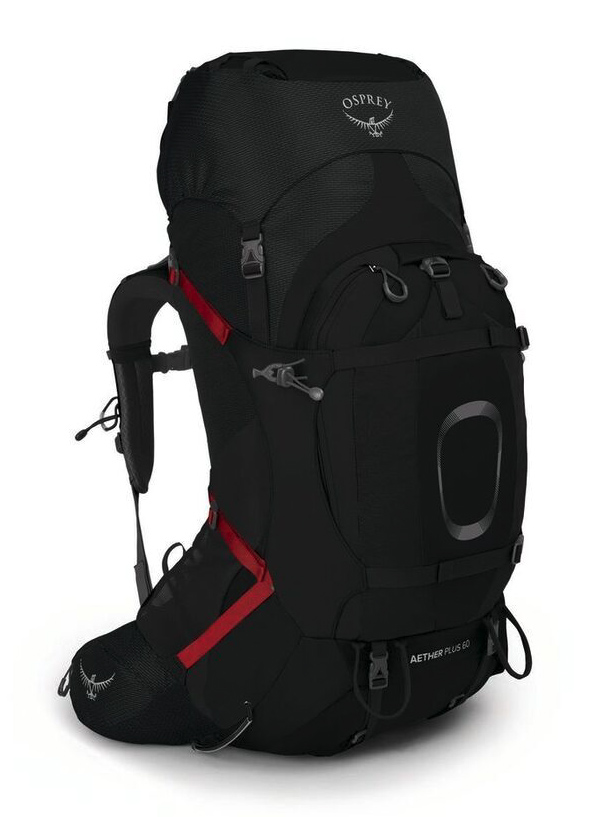
A 60 litre pack for carrying big loads needed for multi-day up to multi-week hikes. This packs weights in at 2.1 kg
3. Features
Oh the choices we have! Before you choose the features you want, hopefully you have considered the first two points of purpose and pack size. Features to consider when buying a pack include:
Frame type – Internal-frame backpacks versus frameless
- Frameless packs are really only a consideration when dealing with smaller day packs or when you are carrying light loads. The majority of packs these days are internal framed packs which provide a degree of rigidity to stop your gear moving around in the pack
Ventilation
- Most packs these days are split into two broad categories. Those that use foam padding that sits comfortably on your back and those with a mesh ‘trampoline’ type structure that provides an air gap between your pack and your back. The foam padding style packs are good with both light and heavy loads but tend to make your back sweat more, particularly in hot weather
- The trampoline style packs create an air gap that minimises, but doesn’t completely eliminate sweating. These packs work well with medium to heavy loads but tend to feel like they are ‘floating’ when carrying very light loads. Try both on and see what suits you
Access
- Apart from accessing your gear through the main opening at the top of the pack, some packs provide an ability to access the pack through a lower access point or will allow you to zip open the entire front of the pack. You’ll usually use the lower compartment for sleeping bags, which means you can easily access items without having to pull all the gear out of your pack. I have a personal preference for a single opening on the main compartment of the pack as I use a pack liner to provide extra protection and waterproofing
Pockets
- Pockets are great for keeping snacks, cameras and all those other little things you carry in easily accessible places. Pockets should be easily accessible when wearing the pack. A lack of pockets will make or break a pack choice for me
Hip belt
- Unless you are carrying a very small or ultralight pack, the pack will have some form of hip belt. The hips are where you carry the bulk of the weight (not the shoulders!) so if you are carrying heavy loads, decent hip padding with a lumber support is crucial. You will usually have at least one pocket on the hip belt if not more
Attachment points
- I prefer to have minimal gear hanging off my pack. In fact the only pieces of external gear are my hiking poles if I’m not using them and a trowel for digging cat holes. Check out the external attachment points on a pack to make sure it suits your needs
Built-in rain cover
- Rain covers can either be a separate item or built in. Most of my packs don’t have built in rain covers and I must admit I don’t care one way or another. I do use a rain cover sometimes (often to keep animals out) and don’t mind if it’s seperate or attached
Built-in hydration sleeve
- This is a pretty common feature on packs these days but if you are not a fan of hydration bladders preferring instead to use water bottles, this may not be an issue. Some packs will come with external hydration bladder sleeves which can make it easier to remove and replace your hydration bladder when topping up unless your pack is fully loaded

Pack frame on the Osprey Exos 48 showing the trampoline style support that lifts the pack off your back and minimises sweating on your back
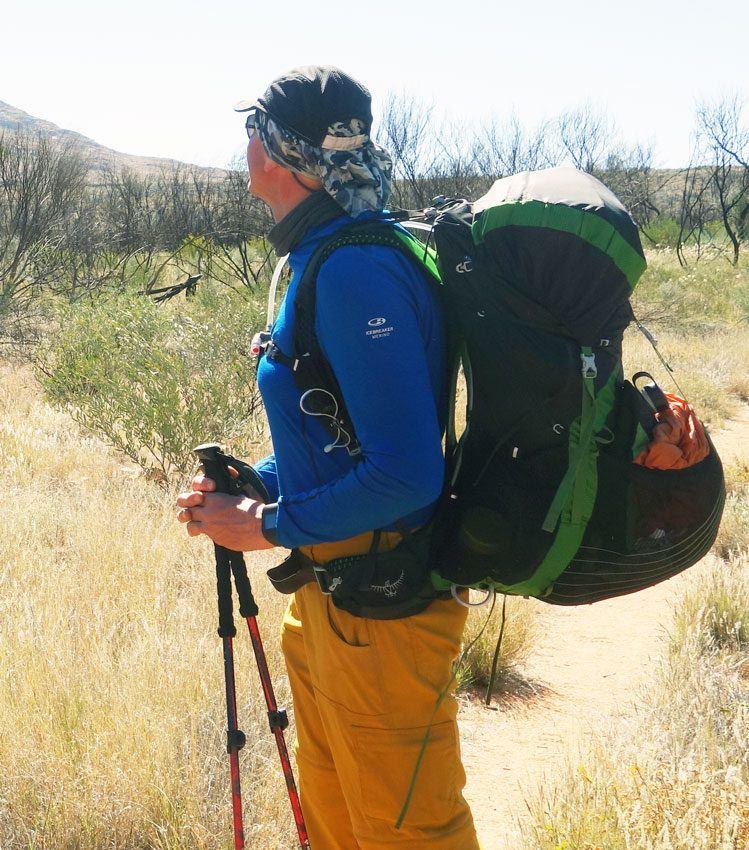
Trampoline style pack. The air gap between the pack and my back is noticeable in the middle of this image with the contact points being at the hips and the shoulder blades

A foam style pack that sits fully against the back. Very comfortable but also very sweaty in hot weather. This pack is also fully adjustable on the torso length
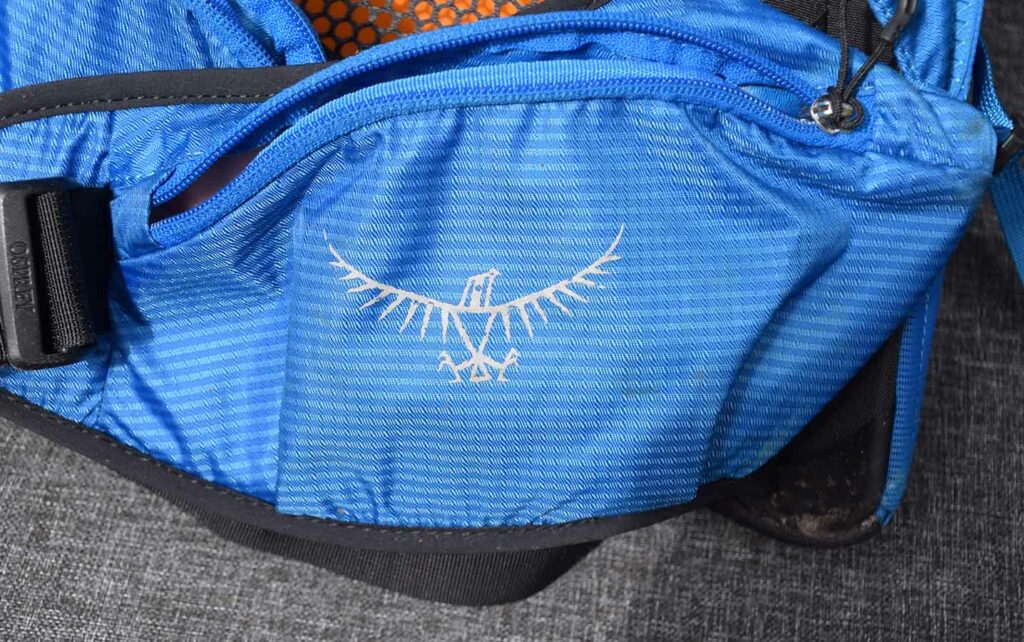
Pockets on a pack are essential but just what you need is really up to you to choose
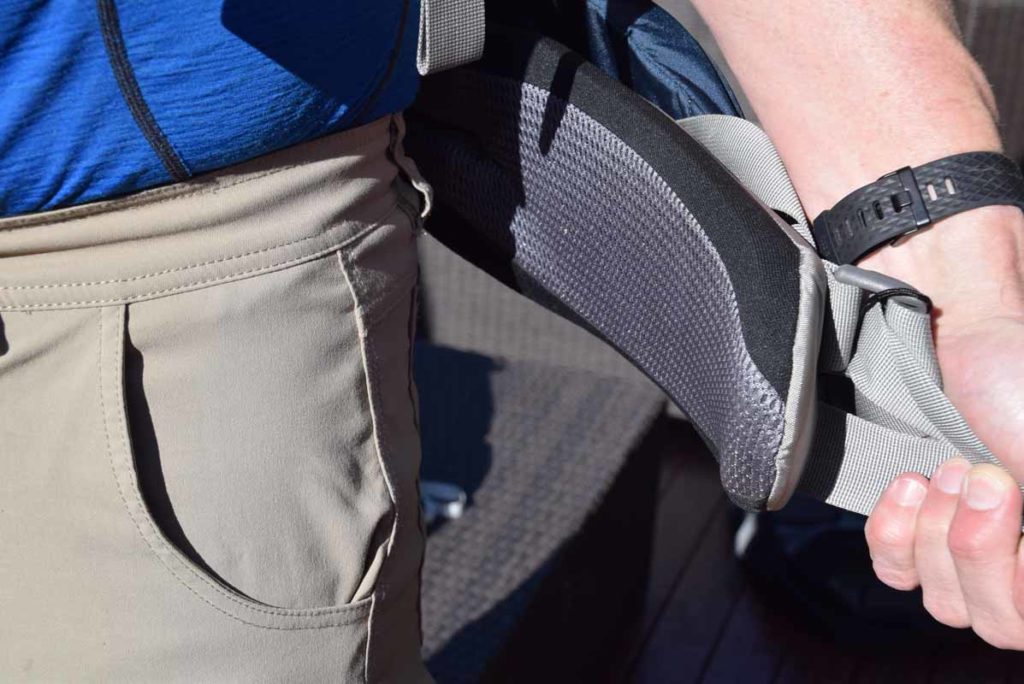
Padded hip belt. The heavier the pack weight the more padding and support you will need

Attachment points shown on an Osprey pack to hold trekking poles when not in use
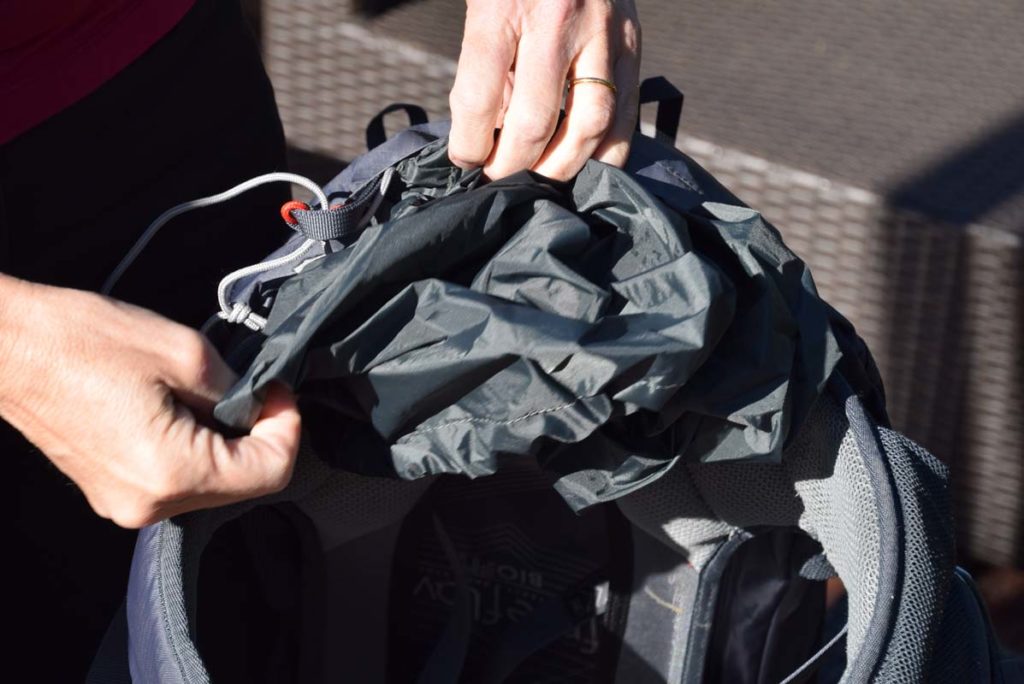
Built in rain cover in its own dedicated pocket
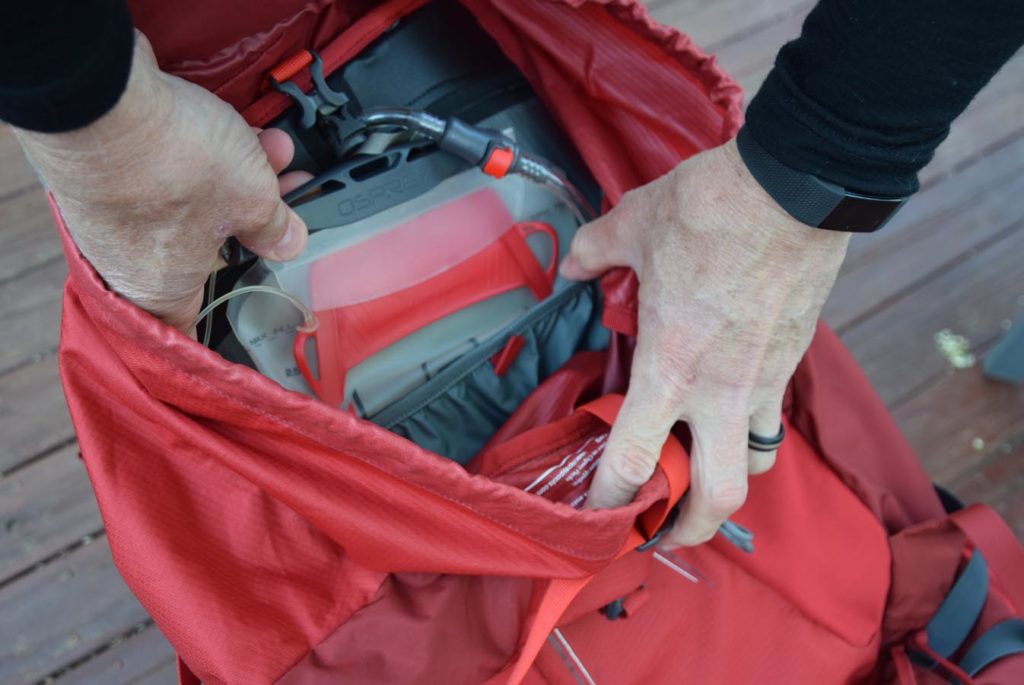
A built in sleeve to hold a hydration bladder
4. Durability
Just how long do you want a pack to last? Very lightweight packs are not going to last as long as the heavy grade, heavy weight packs. My oldest pack is just over 11 years old and is still in very good condition but I wouldn’t necessarily class it as durable – I’ve just looked after it.
When choosing just about any piece of hiking equipment there is always a trade off between cost, weight and durability. It’s rare for you to find gear that is cheap, durable, lightweight, and has all the features you want. In most cases you won’t get everything and will have to work out where your priorities lie and backpacks are no different. Highly durable backpacks are usually heavier and if we are talking durability there are a number of brands on the market that are constructed with canvas or extremely heavy grade material.
5. Cost
Everyone has a budget and after working your way through items 1 to 4 on our list, you will hopefully be left with a choice of at least two or more packs. This is where you need to decide which of the packs you have identified you can afford and whether paying the extra money for a dearer pack is really worthwhile. Only you (or your partner) can answer that question.
Last words
Spend the time doing your research and have a look around. If you haven’t worked it out yet, no one store carries every brand on the market so you may need to visit a number of different stores to try on your short list. For most hikers they are only likely to own 1 larger format pack at a time.
The key takeaway here is not to rush into buying a pack and to remember that this is a piece of gear you are likely to be using for many years so make sure that its comfortable.